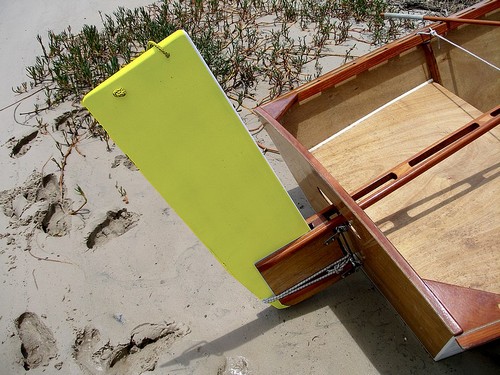
A 15ft Pram for Dinghy Cruising
20171009
20171011
20171014
20171022
20171026
20171027
20171028
20171031
20171102
20171105
20171106
20171112
20171115
20171116
20171117
20171119
20171122
20171126
20171201
20171203
20171208
20171231
20180106
20180108
20180121
20180126
20180205
20180311
20180316
20180329
20180330
20180331
20180401
20180402
20180404
20180405
20180406
20180407
20180409
20180411
20180413
20180414
20180415
20180420
20180421
20180422
20180424
20180426
20180427
20180429
20180430
20180501
20180503
20180505
20180507
20180510
20180511
20180512
20180513
20180514
20180518
20180527
20180602
20180603
20180609
20180610
<<
>>
20171027 |
|
Cleaned up the seat supports and verified that the seats and floorboard in the upper position were still flush with the bridge deck and aft deck. Spent some time pondering about the rudder construction. When I was racing Moths in the eighties the European skiffs all had kick-up rudders whereas nearly all Australian boats had lifting rudders like the Goat Island Skiff designed by Michael Storer. It looks too simple with the bungee holding the rudder in place but it is very effective in shallow waters. When you hit the ground the rudder the bungee allows the rudder to kick back. In the worst case the bungee breaks and the rudder box and rudder remain intact. For Hatseflats I will use the OZ-style rudder box with the helm being an integral part of the construction. Today I meant to install the daggerboard case. Since I wanted it to be bullet-proof I was unhappy with the earlier approach. I decided to stick with common sense and pre-assemble the daggerboard case and then fit it into the hull.  20171027_GIS_Rudderbox.jpg 20171027_IMG_0314.JPG 20171027_IMG_0315.JPG 20171027_IMG_0316.JPG |